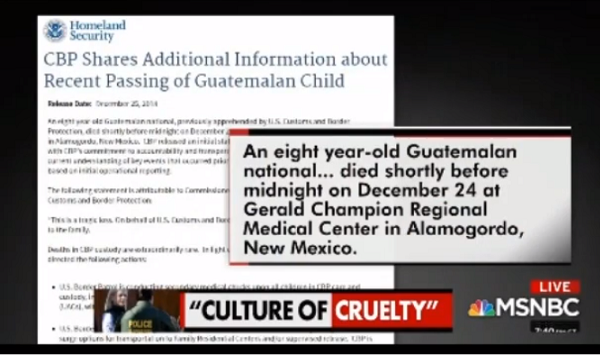[ by Charles Cameron — this one, on sacrament, symbol and such, winds up being an intro to #15, not yet written ]
.
My last post On the felicities of graph-based game-board design drew forth a stunning tweeted response from JustKnecht, friend and fellow explorer or Hesse’s Glass Bead Game and the magic of ideas behind it:
**
That’s a fascinating graphical DoubleQuote, at first glance, so I dug into the two images, the left hand one coming from a Sembl post of mine in this series, On the felicities of graph-based game-board design: two dazzlers.
It’s the one on the right, however, that opened doors for me — one door being the article by Gentner and Jeziorski, the other being Richard Boyd‘s article that follows it in Andrew Ortony (ed), Metaphor and Thought, 2nd ed, CUP (1993):
Gentner & Jeziorski, The shift from metaphor to analogy in Western science
Richard Boyd, Metaphor and Theory Change: What is ‘Metaphor’ a Metaphor for?
Notice, incidentally, the beautiful ouroboros in Boyd‘s title!
Okay, that’s my Christmas reading.
**
It seems I’m way behind, and it’s time maybe for the HipBone Games to enter the slipstream of Philosophy as she is practiced these days.
But first, and to put the good folks of Elizabeth Anscombe‘s discipline off the scent, there’s the question of Sacrament to consider. Sacrament, along with Entropy, is something Gregory Bateson instructed his medical students to comprehend if they are to be civilized in their discourse as future doctors and psychiatrists. In the first paragraph of the Introduction to his Mind and Nature, Bateson writes:
Even grown-up persons with children of their own cannot give a reasonable account of concepts such as entropy, sacrament, syntax, number, quantity, pattern, linear relation, name, class, relevance, energy, redundancy, force, probability, parts, whole, information, tautology, homology, mass (either Newtonian or Christian), explanation, description, rule of dimensions, logical type, metaphor, topology, and so on. What are butterflies? What are starfish? What are beauty and ugliness?
Note that the concept of “sacrament” occupies a place of honor second only to “entropy” in Bateson’s listing.
**
Sacrament?
Sacrament?What does that have to do with the philosophy (and graphical rendering) of metaphor?
First, here’s a quick look at the notion of Sacrament, from the Introduction: Mapping Theologies of Sacraments (pp. 1-12) of Justin Holcomb and David Johnson’s Christian Theologies of the Sacraments: A Comparative Introduction:
In the prologue of the Gospel According to John the apostle writes about the incarnation of the Word of God, Jesus Christ, that “from his fullness we have all received, grace upon grace” (1:16). One of the means by which Christians believe we receive the grace of God in Christ is the sacraments. But what are the sacraments? As many Christians know, Augustine of Hippo succinctly defined a sacrament as being “an outward and visible sign of an inward and invisible grace.”
The central sacrament of Christianity is the Eucharist, instituted by Christ with the words — pointing to the bread about to be broken and shared, in a complex that includes his coming crucifixion, and the institution of the Church as his continuing body or presence on earth — This is my Body.
The Catholic view:
The doctrine that Christ’s real presence is thus to be found in the communion wafer consecrated with the remembrance of those words at Mass is that of Transubstantiation — a contested doctrine to be sure. And the contest is viewed theologically as being between metaphor and simile.
Thus, as I have noted before, Northrop Frye in his Anatomy of Criticism writes:
The animal and vegetable worlds are identified with each other, and with the divine and human worlds as well, in the Christian doctrine of transubstantiation, in which the essential human forms of the vegetable world, food and drink, the harvest and the vintage, the bread and the wine, are the body and blood of the Lamb who is also Man and God, and in whose body we exist as in a city or temple. Here again the orthodox doctrine insists on metaphor as against simile, and here again the conception of substance illustrates the struggles of logic to digest the metaphor.
The Reformed view:
Simply put, the Reformed view, contra Frye, considers the Words of Institution as simile, see Literary Devices in the scripture [Caution: this link auto-downloads a Word doc]:
A metaphor is an abridged simile
— ie, Matthew 26.26 is to be understood as meaning not “this is my Body” but “This is like my Body”..
Thus Daniel Featley DD in his Transubstantiation Exploded (1638) writes:
If in this sentence “This is my Body,” the meaning be “this Bread is my Body,” the speech cannot be proper, but must of necessity be figurative or tropical.
But in this sentence, “This is my Body,” the meaning is, “This Bread is my Body.“
Ergo this speech cannot be proper, but must of necessity be figurative and tropical; and if so, down falls Transubstantiation built upon it, and carnal presence built upon Transubstantiation, and the oblation and adoration of the Host built upon the carnal presence.
That’s a whole lot of toppling of the Catholic edifice, all predicated on a reading of Christ’s words as simile, not metaphor.
Here “simile” seems to mean figurative rather than literal — where the Catholic view, as we have seen, aka “metaphor”, posits literal real presence in the form of a (transcendent) inward and spiritual grace..
**
A by-gone Queen of the Sciences
How does this theology of metaphor fare today? Theology, my own discipline at Oxford, sadly seems a by-gone Queen of the Sciences. Thus William Grassie writes:
Our medieval ancestors understood theology to be the queen of the sciences. Her twin sister Sophia — the Greek word for “wisdom” — was also venerated in the discipline of philosophy. It was hard to tell the two beauties apart, but together they once ruled the many domains of human knowledge.
Theology departments today, however, are increasingly irrelevant backwaters in the modern university, engaged in seemingly solipsistic debates.
Ouch.
Just for the record, while we’re slipping a theological understanding of metaphor into our thinking on the topic, should also consider Coleridge on symbol:
Now an allegory is but a translation of abstract notions into a picture-language, which is itself nothing but an abstraction from objects of the senses; the principal being more worthless even than its phantom proxy, both alike unsubstantial, and the former shapeless to boot. On the other hand a symbol … is chaacterized by a translucence of the special in the individual, or of the general in the special, or of the universal in the general; above all by the translucence of the eternal through and in the temporal. It always partakes of the reality which it renders intelligible; and while it enunciates the whole, abides itself as a living part in that unity of which it is the representative.
**
In the spirit of Hermann Hesse‘s Nobel-winning Glass Bead Game — and if you can’t abide the arts and humanities, then of EO Wilson‘s concept of consilience — these notions of sacrament, metaphor and symbol should be entered into the philosophical and scientific thought-stream on metaphor and its graphical representation, IMO, YMMV, &c.
In case you missed all that.
And so to the present readings, Boyd and Gentner & Jeziorski..
**
**
Earlier in this series:
On the felicities of graph-based game-board design: preliminaries
On the felicities of graph-based game-board design: two dazzlers
On the felicities of graph-based game-board design: three
On the felicities of graph-based game-board design: four
On the felicities of graph-based game-board design: five
On the felicities of graph-based game-board design: six
On the felicities of graph-based game-board design: seven
On the felicities of graph-based game-board design: eight
On the felicities of graph-based game-board design: nine
On the felicities of graph-based game-board design: ten
On the felicities of graph-based game-board design: eleven
On the felicities of graph-based game-board design: twelve
On the felicities of graph-based game-board design: thirteen












